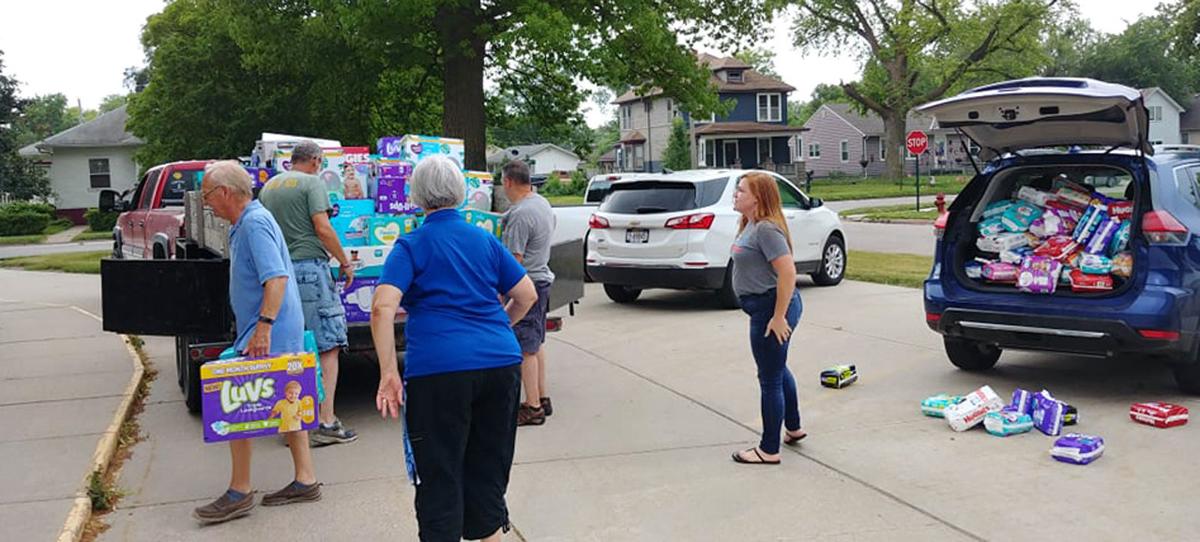If you're like many parents, you've probably considered making the switch to cloth diapers at some point. (Probably around the time you totaled up exactly how much disposable diapers were costing you each month.) But do cloth diapers actually save money? Is it more mess than it's worth? Here's a quick primer for cloth diaper newbies on what to expect if you make the switch.
First, it's important to know that not all cloth diapers are created equal. (And if you're picturing the handkerchief-like versions that your grandmother might have used, you should know we've come a long way.) Let's tackle the types available so you can determine which, if any, would work for your lifestyle.
Flats + prefold + contour cloth diapers
We're grouping these diapers together because, while they have their differences, they're all similar in that they're a little more labor intensive. It generally takes a few tries to get the fold right to avoid leaks, and they all require some kind of fastener to hold them together. They also don't come with a waterproof outer layer.
Flat cloth diapers are probably what you first picture when you think of cloth diapering. It's a flexible piece of cloth that you can fold a variety of ways to customize the fit for your baby. For example, you might fold so that there is more cloth and absorbency in the front for a boy baby. The downside of flats is that there is a bit more diaper origami involved to get the fit right and prevent leaks. But if you are a champion swaddler, this might be the right choice for you.
FEATURED VIDEO
Prefolds are similar to flats in that they are one piece of rectangular cloth, but prefolds have already been doubled up for extra thickness and sewn into place. There is less work for you to get the right absorbency, but they do still require some fancy wrapping skills.
Contours are similar to prefolds except that they (you guessed it) already come contoured to your child's legs. You simply wrap it up over your child's private area and secure in place with a fastener.
Fitted + pocket cloth diapers
If you're looking for fewer extra accessories, these cloth diapers might be a better fit for you. They both come with their own fasteners, but some do require extra inner or outer layers. They are also generally available in single sizes or adjustable sizes, so be sure to double check before buying to see how many you will need.
Fitted cloth diapers much more closely resemble the disposable diapers you're used to working with. Elastic at the waist and legs give them the signature "fitted" style, but they typically don't have a built in waterproof outer layer.
Pocket cloth diapers are sort of like fitted diapers in reverse. They come with a waterproof outer layer and an internal pocket that must be stuffed with some kind of absorbent material or inner layer.
All-in-one + hybrid cloth diapers
If you're looking for a cloth diaper that is most like a disposable diaper, an all-in-one cloth diaper or a hybrid cloth diaper might be your best bet. There is no folding and you don't need to add an outer or inner layer for a complete diaper. The downsides of these options is that they are much more expensive than other cloth diapers (and it probably won't feel like you're saving money when you initially stock up).
An all-in-one cloth diaper is like it sounds--all of the parts of the diaper come built-in. That includes the fasteners, a waterproof outer layer and an absorbent inner layer. That's great if you just want to toss your diaper in the hamper like you would a disposable diaper in the trash, but it can be frustrating if you need to adjust the absorbency of the diaper as your baby gets older or starts sleeping through the night.
In that case, a hybrid diaper might be the answer. They are the most expensive option, but they feature the ease of an all-in-one with the added option of being able to add and adjust the inner layer. You can stuff them with reusable or disposable inner layers to suit your needs. There are even flushable inserts for an even easier cleanup!
What to know in advance
With any of these cloth diaper options, it's recommended that you have between 12 and 20 diapers in your set. You also may need a special detergent to extend the life of your diapers and keep them soft and non-abrasive. (The specific brand will likely recommend the proper cleaning solution.)
Cloth diapers are certainly the most eco-conscious choice you can make when it comes to diapering, and they often translate to cost savings over time. But the important thing is making a choice that best serves you and your family's needs. Happy diapering!
We independently select and share the products we love—and may receive a commission if you choose to buy. You've got this.
The Link LonkApril 17, 2021 at 12:13AM
https://ift.tt/3ghVbRt
A beginner’s guide to cloth diapering - Motherly Inc.
https://ift.tt/2Comt7j
Diapers

No comments:
Post a Comment